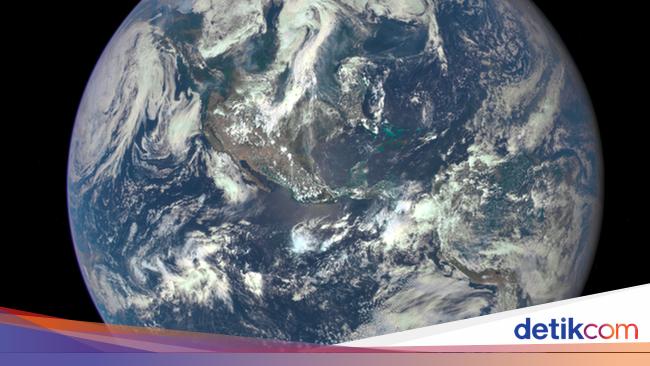Jakarta –
If you have a super large measuring tape that starts at the center Earth and reach the highest peak of our planet, you will not find Mount Everest as the highest point. Instead, the highest mountain will be on the other side of the world, Mount Chimborazo in Ecuador.
Chimborazo wins in this case because the Earth is actually a little pinched at its poles. The depiction is like a ball pressed by two hands on the top and bottom. As a result, the equator where Ecuador is located will stand out.
Quoted from Live ScienceTuesday (5/4/2022) instead of a perfectly round ball shape, Earth is an oblate which means its shape is like a ball that is slightly oval like an egg. But this oval is just a little, so at first glance it still looks like it looks perfectly round and is not noticed by everyone. What is clear, the Earth is not flat.
“In fact, most planets and moons are not true spheres. They are usually squeezed in some way or another,” said James Tuttle Keane, a planetary scientist at NASA’s Jet Propulsion Laboratory in Pasadena, California, United States.
“So why aren’t Earth and the other planets and the Moon perfectly spherical? This is due to something called the centrifugal force or the external force experienced by a rotating object,” said Keane.
A rotating planet experiences a centrifugal force. You can also see it in action: if you rotate in a chair or on your feet, you will feel a tug from your center. This may cause you to dislocate your arm or leg.
“Or, if you’re sitting on a merry-go-round, there’s a little extra force acting on you on that carousel, so you feel pulled aside,” Keane describes.
As the planets and Moon rotate, the centrifugal force causes them to bulge at their equator. The effect can be very subtle, but great examples are Jupiter and Saturn.
If you look at the global picture of one of these gas giants, you will see that they are slightly pinched and the center is protruding. Keane said that the pinched shapes of these planets are more visible because they are planet the fastest rotating in the Solar System. The faster something spins, the more centrifugal force acts on it.
An extreme example of the centrifugal force acting on an object is planet dwarf Haumea. The dwarf planet is in the Kuiper Belt, a region of ice objects outside Neptune’s orbit.
“Haumea is the size of Pluto, but rotates very fast, one full rotation every four hours, so that its existence is almost shaped like an egg,” Keane concludes.
Watch Videos “Atmosphere of the Earth Alms Title in Bekasi which was called Sewindu Once“
[Gambas:Video 20detik]
(rns/afr)
–


